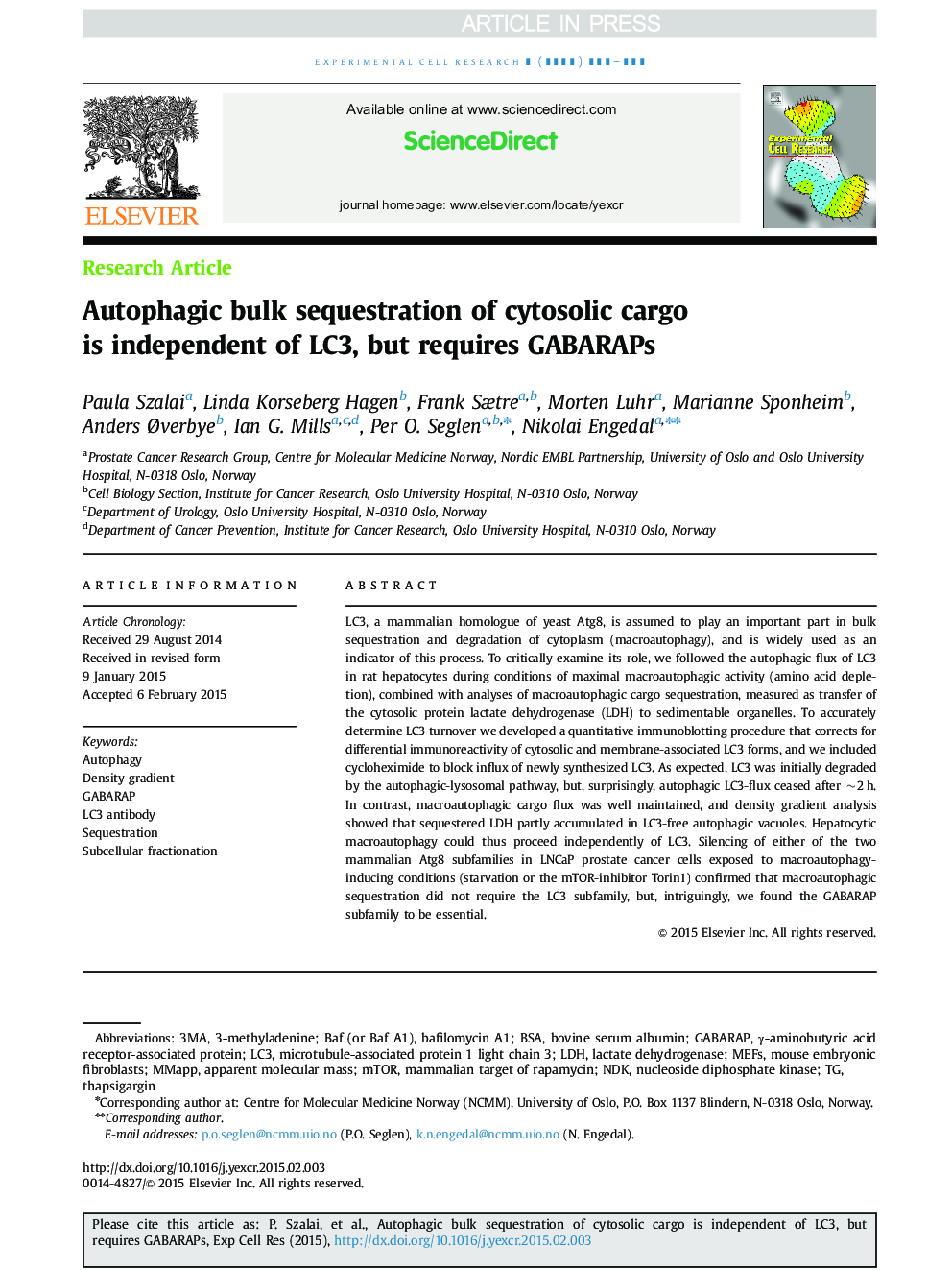| Article ID | Journal | Published Year | Pages | File Type |
|---|---|---|---|---|
| 10903774 | Experimental Cell Research | 2015 | 18 Pages |
Abstract
LC3, a mammalian homologue of yeast Atg8, is assumed to play an important part in bulk sequestration and degradation of cytoplasm (macroautophagy), and is widely used as an indicator of this process. To critically examine its role, we followed the autophagic flux of LC3 in rat hepatocytes during conditions of maximal macroautophagic activity (amino acid depletion), combined with analyses of macroautophagic cargo sequestration, measured as transfer of the cytosolic protein lactate dehydrogenase (LDH) to sedimentable organelles. To accurately determine LC3 turnover we developed a quantitative immunoblotting procedure that corrects for differential immunoreactivity of cytosolic and membrane-associated LC3 forms, and we included cycloheximide to block influx of newly synthesized LC3. As expected, LC3 was initially degraded by the autophagic-lysosomal pathway, but, surprisingly, autophagic LC3-flux ceased after ~2Â h. In contrast, macroautophagic cargo flux was well maintained, and density gradient analysis showed that sequestered LDH partly accumulated in LC3-free autophagic vacuoles. Hepatocytic macroautophagy could thus proceed independently of LC3. Silencing of either of the two mammalian Atg8 subfamilies in LNCaP prostate cancer cells exposed to macroautophagy-inducing conditions (starvation or the mTOR-inhibitor Torin1) confirmed that macroautophagic sequestration did not require the LC3 subfamily, but, intriguingly, we found the GABARAP subfamily to be essential.
Keywords
LC3NDKapparent molecular mass3MAThapsigarginMEFsmTOR3-methyladenineBSAbovine serum albuminAutophagybafilomycin A1Subcellular fractionationNucleoside diphosphate kinaseDensity gradientSequestrationlactate dehydrogenaseLDHmouse embryonic fibroblastsmammalian target of rapamycinmicrotubule-associated protein 1 light chain 3GABARAP
Related Topics
Life Sciences
Biochemistry, Genetics and Molecular Biology
Cancer Research
Authors
Paula Szalai, Linda Korseberg Hagen, Frank Sætre, Morten Luhr, Marianne Sponheim, Anders Ãverbye, Ian G. Mills, Per O. Seglen, Nikolai Engedal,
